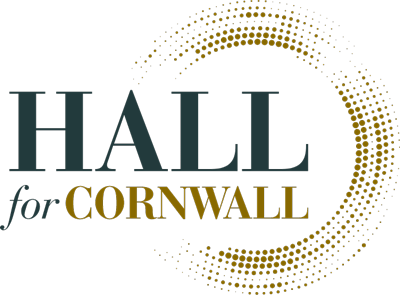
STORYPOINT 9 : WORLD WAR II
View Storypoints Children’s Guide for Storypoint 9
US Army Cap
As well as sending and receiving vital communications from home, the Postal Exchange for the US Army here also served snacks and drinks and hosted an indoor market and cinema. Dances were held for the troops and their female partners and the whole city went dance crazy, with US troops and local girls often seen jitterbugging and jiving in the streets.

Conditioned vehicles, ready to hand over to the UK Army from HTP Motors on Back Quay towards the end of WWII © Royal Institution Cornwall
At Christmas and Easter the children of Truro attended variety shows put on by ‘the Yanks’. Treats included chewing gum, candy and paper bags filled with chocolate powder that you’d dip your finger in, like sherbet.
“At Christmas in 1943 we were given an orange, an apple and a large bar of bitter dark chocolate. The chocolate I gave to my mother who melted it down before spreading it all over a chocolate sponge log for Christmas Day high was delicious with custard.”
Neville Harcourt Paddy, WW2 People’s War.*

An example of a ball attended by US Army and British people during WWII. © Mary Evans Picture Library
Camping out
Today there are few reminders of the troops who were once stationed here. That’s because they lived in huge canvas, tented villages that left little or no evidence of what was, at the time, a huge upheaval and excitement for Truro.
The troops were preparing to invade the continent as part of the D-Day Landings. At Boscawen Park, where peaceful games of cricket are now held, they once welded together huge concrete landing craft to carry highly explosive munitions. Slipways were made to launch the huge boats, which were floated down the river and stored under trees in creeks to hide them from invaders.
The badge you see on the hat in our illustration is that of the 531st Engineer Shore Regiment which had a number of camps in and around Truro, drilling troops for combat.

“Often we witnessed convoys leaving the camp with US soldiers dressed in battle order. We also saw them return after darkness, during the winter of 1943/44, looking disheveled, covered in mud and somewhat exhausted.”
Neville Harcourt Paddy, WW2 People’s War.*
The US soldiers left in a hurry, leaving behind personal belongings including photographs, magazines, candy and more. At Boscawen Camp a man-made mountain of unwanted equipment and belongings became known as The Smoking Hill. Eventually it was bulldozed, flattened and buried without a trace.
Cornish invasion
Footage unveiled by US historian Tony Koorlander shows jeeps jam-packed with troops driving through whitewashed Cornish villages to the beach at Trebah. Military vehicles were hidden under camouflage along country lanes. Sleepy Cornwall had become a huge centre of the allied war effort.
“Everyone knew it could not last and that something would eventually happen which would cause the magical spell to be broken, but this was a time for stolen happiness and the brief of live for today, for there might not be a tomorrow.”
Neville Harcourt Paddy, WW2 People’s War.*

US Army Troops in Mawnan Smith near Falmouth, preparing to leave for the DD Landings from beaches along The Helford River.
In June 1944 thousands of troops crossed the channel, many leaving from secret locations along the Cornish coast and Helford river. Seven thousand men left from Trebah beach alone to join the 156,000 who would launch the attack in France. It was the largest invasion by sea in history and many never went home. An estimated 2,500 allied troops died on the first day of the invasion, some of them would have been those Americans who were stationed in Truro.
* WW2 People’s War is an online archive of wartime memories contributed by members of the public and gathered by the BBC.
Content in this article is taken under a Creative Commons Licence from archived project Memories of when the Yanks came to Truro Part 1 © Copyright Doreen Bennett and Neville Harcourt Paddy.


